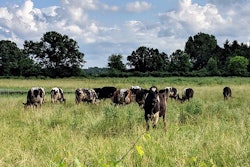
Chicken, without the taboos associated with other meats, and thanks to the advancements made by primary breeding companies, is ideally placed to meet the growing demand for animal protein already evident as a result of the rising global populations.
Africa is the second most populous continent on earth, and the United Nations expects its population to grow to 2.5 billion in 2050 and to more than 4 billion by 2100. By 2100, one out of every three people on earth will live in Africa.
The population of Sub-Saharan Africa (SSA) in particular, currently at 800 million, is expected to rise to 2 billion by 2050 and to 3.7 billion by 2100.
At the same time, per capita incomes in some African countries, including SSA, are forecast to accelerate beyond today’s levels.
Economic indicators show that SSA will grow by 18 percent between 2015 and 2020 and then continue a similar trend. Having said that, SSA comprises diverse countries at various stages of economic development, so growth is likely to vary greatly across the region.
With this advancement will naturally come a higher demand for food and especially for meat, and due to its affordability, sustainability and popularity, poultry is predicted to be the region’s protein of choice. But, will this up-and-coming region be prepared to meet surging demand?
Beating the challenges
For developing regions, poultry farming presents opportunities and challenges.
Africa accounts for almost 16 percent of the world’s population, but only 5 percent of chicken meat production. Some hurdles to creating viable poultry businesses in parts of Africa are cost, performance and lack of education and experience in successful commercial production.
Primary poultry breeders can play a major role in overcoming these challenges.
First, feed represents the greatest expense in production, and importing feed ingredients to the region can be costly and difficult.
Breeders have addressed this problem by selecting chickens with optimum feed efficiency, and today’s breeds are improving in livability. They can also grow at a healthy rate and yield more meat, while consuming less feed than ever before.
These advancements bring huge economic benefits, enabling farmers to get the most from their existing resources, even if those resources are limited.
And today’s birds perform extremely well under varying climates and challenging conditions, which is important for traditional African farmers who often lack resources such as environmentally controlled housing, instead raising birds in open-sided, repurposed facilities or in the open air. Modern birds are also stronger and healthier, which normally results in greater disease resistance and better livability.
However, even with birds that perform well under challenging conditions, sound management practices are critical for the genetic potential to be achieved. Here is another area where breeding companies can help. They offer the latest knowledge based on intense field research, as well as regional teams of experts who can help farmers increase efficiencies and steadily build success in their businesses.
Feeding the world
Global poultry breeding companies have not just an opportunity, but a social responsibility to promote the success of progressing world regions such as SSA. Breeders have already moved ahead of the game by producing robust poultry lines that support economic sustainability, and they’re committed to do all that is needed to support producers who strive to feed their local communities with a cost-effective, nutritious and sustainable source of protein.
Why chicken is the sustainable meat option















